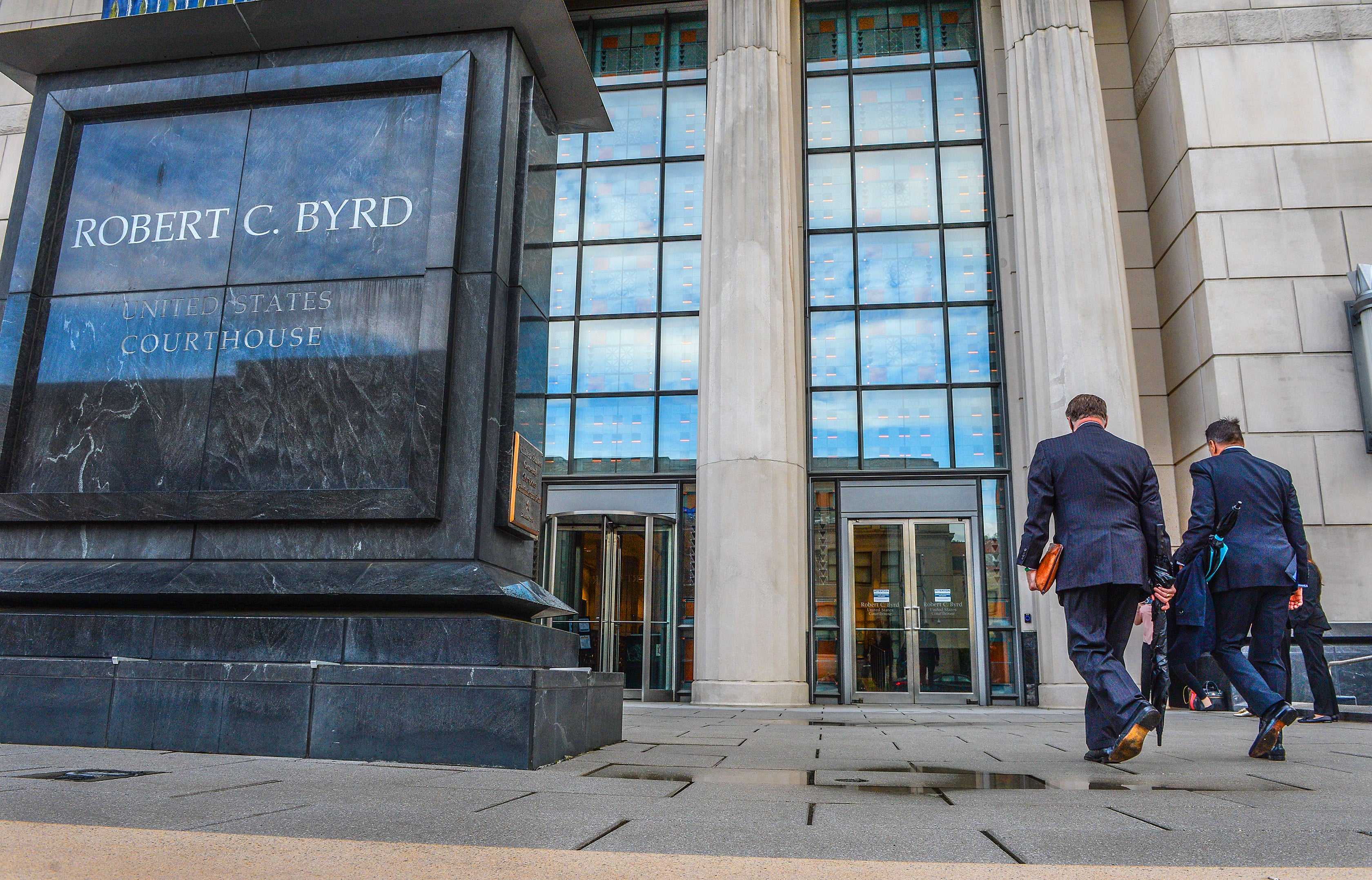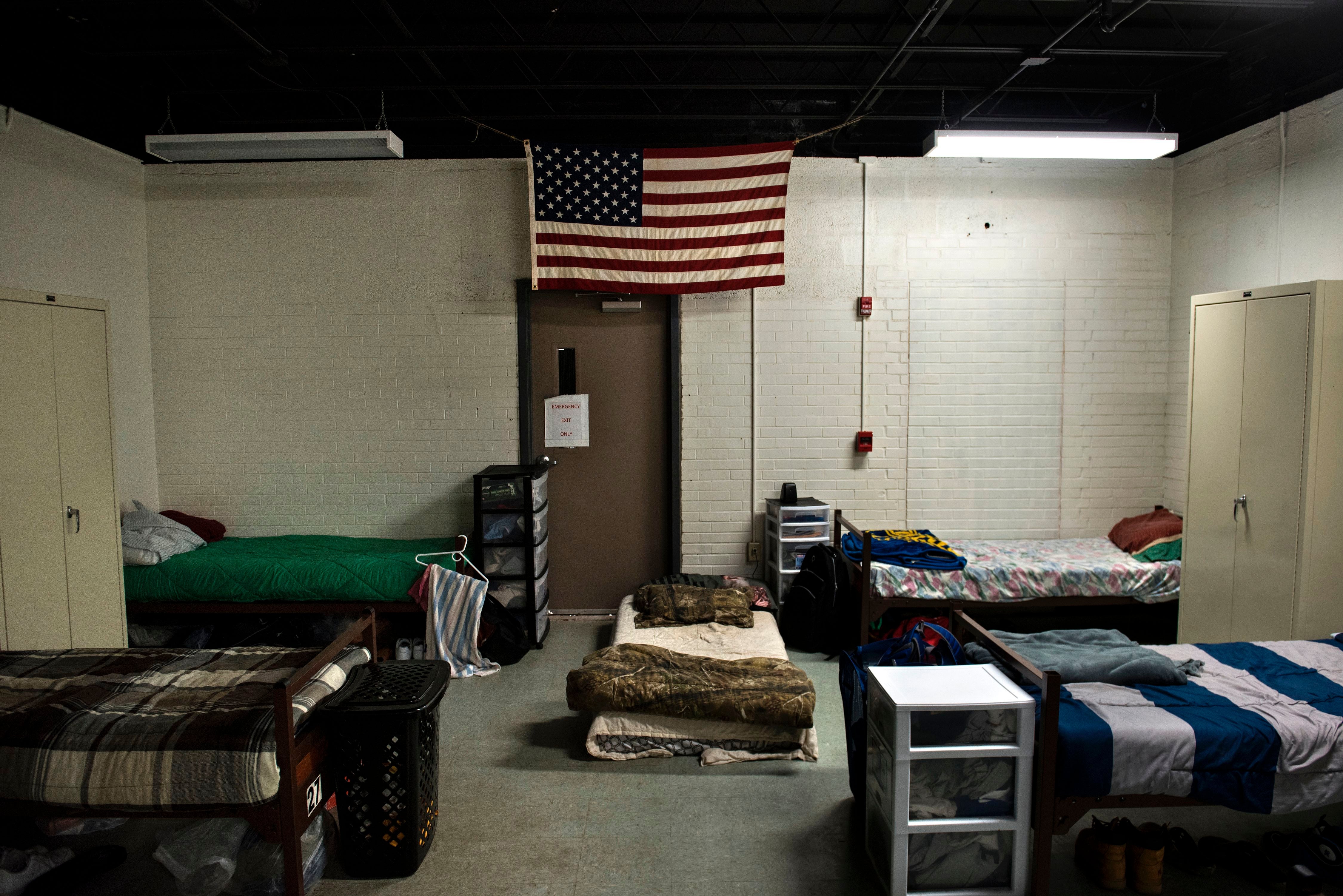A West Virginia county ravaged by the opioid crisis is having its day in court
Drug companies sent more than 100 million doses of opioid pills into one county over an eight-year span. That community is suing the distributors for $2bn, Richard Hall writes

Your support helps us to tell the story
From reproductive rights to climate change to Big Tech, The Independent is on the ground when the story is developing. Whether it's investigating the financials of Elon Musk's pro-Trump PAC or producing our latest documentary, 'The A Word', which shines a light on the American women fighting for reproductive rights, we know how important it is to parse out the facts from the messaging.
At such a critical moment in US history, we need reporters on the ground. Your donation allows us to keep sending journalists to speak to both sides of the story.
The Independent is trusted by Americans across the entire political spectrum. And unlike many other quality news outlets, we choose not to lock Americans out of our reporting and analysis with paywalls. We believe quality journalism should be available to everyone, paid for by those who can afford it.
Your support makes all the difference.At the height of the opioid crisis, millions upon millions of prescription pain pills flooded into Cabell County in West Virginia. The highly addictive and routinely overprescribed drugs were readily available from pharmacies for years, even as overdoses soared. Their delivery was a reliable, efficient and mechanical process, one that stood in stark contrast to the devastation they caused.
This community of some 90,000 on the south bank of the Ohio River is still dealing with that devastation today. It is precisely because the damage is ongoing that county authorities have launched a landmark legal action against the distributors of those prescription drugs. They are seeking $2bn in damages to mitigate the impact of the lingering crisis.
The case is being fought here in a federal court in the state capital of Charleston. Just two weeks in, the courtroom has heard dramatic testimony from a fire chief who worked on the frontlines of the overdose crisis, seen countless graphs and charts demonstrating the scale of the shipments, and heard a defence from a high-ranking drug company executive.
The lawsuit was brought by the county and the city of Huntingdon, once considered ground zero of the opioid crisis, against the “Big Three” opioid distributors – Cardinal Health, McKesson and AmerisourceBergen. Those companies are accused of being responsible for shipping almost 90 per cent of the 109.8 million doses of hydrocodone and oxycodone to the county between 2006 and 2014.
That unfathomable number is central to the case, and to the question being asked of the drug distributors in this trial: how could they not realise that so many pills flooding into this one community was a sign that something was wrong? And if they did notice, why didn’t they act?
An answer, of sorts, came at the start of the second week of the trial. In one of the key moments of the proceedings so far, Chris Zimmerman, senior vice president of regulatory affairs at AmerisourceBergen, was questioned on why his company did not halt shipments when the order numbers were so high.
“We’re a company. We’re not an enforcement agency and we’re not a regulatory agency,” he said.
But lawyers representing Cabell County have tried to paint a different picture, and hope to demonstrate that the sheer numbers involved should have forced action from the distributors.
“The numbers are so high, and so extreme, that they should have raised red flags and caused them to act differently,” Anthony Majestro, an attorney representing the county, told The Independent after a day of proceedings.
“The distributors have a duty to have procedures in place to investigate suspicious orders. And they have a duty, we believe, not to ship an order that they deem suspicious unless they go look at it,” he said.
“If a pharmacy quadruples its purchase of opioids, they ought to go look and ask why. Maybe there’s a simple answer. But absent explanations for those answers, they have a duty to not ship those drugs.”

It fell to a data analyst to tell that story in the opening days of the trial, and with it came a moment of grim absurdity. Craig McCann, appearing as an expert witness for plaintiffs on day six of proceedings, was on the stand in the courtroom with his head down and a calculator in his hand. He had just been asked to crunch some numbers for the court to determine the total number of pills distributed by these three companies. He paused for a moment before answering.
“The calculator won’t take numbers that large. I’m sorry,” he said.
The numbers he was able to calculate, however, showed that Cabell County was fed an unprecedented rate of prescription pills over the eight years in question. Dr McCann, who had sifted through the official Drug Enforcement Agency (DEA) data with his team, testified that the “Big Three” shipped 63.48 doses of hydrocodone and oxycodone per person to the county, more than three times the national average. He also detailed just how many doses some pharmacies received. One SafeScript pharmacy in Huntington took 35,000 units of oxycodone a month – seven times the national average.
The defence have called his figures into question, suggesting that per capita rates were improperly calculated from census data and failed to take into account patients travelling from outside the county. They have also argued that it was not the job of the distributors to interfere with what a doctor prescribed. Nor was it their job to halt suspicious shipments – rather, that fell to the DEA, to whom the drug companies reported anything suspicious.
When asked if he agreed that distributors had a duty to halt suspicious shipments, Mr Zimmerman, who was the first representative of the drug companies to appear in this trial, said it was “our responsibility to report the suspicious order” to the DEA, but not to halt it.
“The regulation was written to report a suspicious order and then ship it to not affect patient care,” he added.
A spokesperson for AmerisourceBergen said in a statement sent to The Independent that the company “does not determine the supply of the medications it distributes, nor do we impact demand for those medications.”
“The DEA has always been responsible for setting the supply of opioid medications through its use of annual quotas, and demand is driven by the licensed physicians who write prescriptions based on their independent medical judgement. AmerisourceBergen had no role in working with the DEA to set quotas, nor did we interact with physicians or patients to recommend particular medications,” the statement added.

After separate high-profile lawsuits led to multibillion-dollar payouts from drug manufacturers, this case is the first of its kind in a federal court. It is the first test at the federal level of a theory put forward in thousands of other similar lawsuits: that drug wholesalers created a “public nuisance” by allowing the drug shipments to continue even as the crisis became apparent, and that they should now pay to fix it.
While this is a case that may hinge on procedures and numbers, the court has also heard from residents about how the community has been left scarred by the crisis.
Jan Rader, a Huntington fire chief who worked on the frontline of the opioid epidemic as a first responder, regularly dealing with overdoses on the streets, gave an emotional testimony.
“When I started my career in August of 1994, I didn’t see a lot of death. I didn’t see overdoses. Mid-2000s, that started changing. We started seeing overdoses. And at these scenes we would see pill bottles,” she said, according to the Mountain State Spotlight.
Chief Rader, who appeared in a 2017 Nextflix documentary about the opioid crisis called Heroin(e), said the epidemic caused “carnage” in the community and in regard to the mental wellbeing of those like her and her colleagues who were forced to deal with it.
“They are not just going on overdoses. They are going to overdoses of their classmates from high school. They are going on overdoses of their friends,” she said, according to Huntington’s Herald-Dispatch newspaper.

Today, the epidemic caused by the overprescription of pain medication has largely given way to another addiction crisis. When shipments of prescription pills were curtailed in around 2012, addicts simply turned to heroin and other illicit drugs. Cabell County today has one of the highest overdose rates in the entire country.
Connie Priddy, programme coordinator for Huntington’s Quick Response Team, testified that the crisis still touches every part of the community. “It cuts across gender, it cuts across race, it cuts across every socioeconomic line. There is no typical person who overdoses,” she said.
If they win the case, Cabell County and the city of Huntington said the money will go towards programmes to combat the crisis, the biggest need being to fund treatment.
“Our clients are not asking for money spent in the past. They are asking for money to abate the crisis. It would go into treatment, education, federal law enforcement programmes. Lots of ways to stop the problem,” said Mr Majestro.
“It’s about the collective impact it had on the community,” he added.
What happens here in Charleston could have an impact not just on Cabell County, but on hundreds of similar lawsuits across the country. A federal court ruling would open the door for settlements in all those legal actions to the tune of hundreds of millions of dollars.
McKessen said in a statement that it was “deeply concerned about the impact the opioid epidemic is having on families and communities across our nation”.
It added: “Our company plays an important but limited role in the pharmaceutical supply chain, and the claim that McKesson drove demand for opioids anywhere in this country, including the City of Huntington and Cabell County WV, reflects a fundamental mischaracterisation of our role as a distributor.”
Cardinal Health told The Independent that it was “an intermediary in the pharmaceutical supply chain that ships FDA-approved and doctor-prescribed medications from manufacturers to fill orders from our state-licensed pharmacy customers”.
“We fulfil our responsibility to scrutinise prescription opioid orders placed with us, and to spot, stop and report to regulators all those that are suspicious, using an anti-diversion system, with sophisticated analytics and an experienced team of anti-diversion specialists, which adapts constantly to evolving threats,” it added.
The trial is expected to last for 12 weeks.